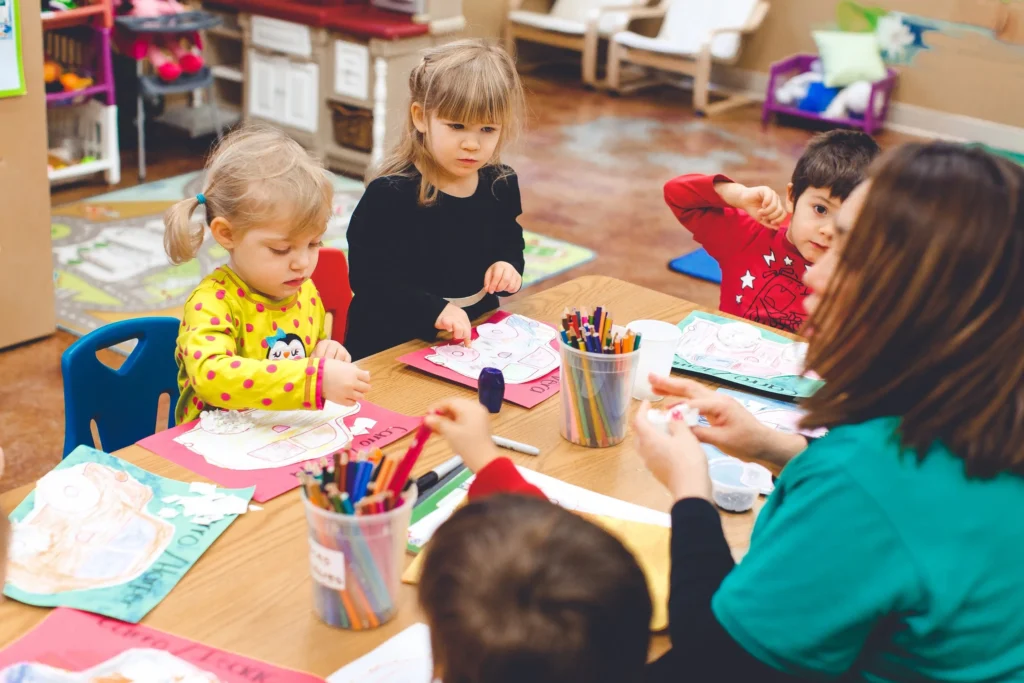
In today’s globalized world, bilingualism is one of the most valuable skills a child can develop. Learning a second language early in life opens doors to cognitive, cultural, and academic growth that lasts a lifetime. Among the most effective and natural ways to introduce a second language is through Spanish immersion preschool programs — early childhood environments where children learn Spanish by being surrounded by it daily, both in play and structured lessons.
If you’re considering enrolling your child in a Spanish immersion preschool, you’re taking an important step toward shaping their linguistic and cultural intelligence. These programs offer much more than just language acquisition — they build curiosity, empathy, and flexibility of thought. Whether you’re a parent eager to give your child a competitive edge or someone passionate about multicultural education, understanding how Spanish immersion preschools work will help you make an informed decision.
What Is a Spanish Immersion Preschool?
A Spanish immersion preschool is an early learning environment where Spanish is the primary language of instruction. Rather than traditional language classes, these programs immerse children in Spanish throughout the day — during playtime, storytime, arts, and academic activities. Children absorb the language naturally, just as they do with their first language. Teachers speak Spanish consistently, helping students associate words with actions, visuals, and emotions.
The goal is not only to make children fluent in Spanish but also to nurture cultural awareness and open-mindedness. Since early childhood is the most effective stage for language learning, immersion programs capitalize on a child’s natural ability to pick up pronunciation, vocabulary, and grammar intuitively.
Why Early Immersion Works Best
Children are remarkably receptive to language between birth and age five. During this “critical period,” their brains are wired to recognize and reproduce sounds effortlessly. Unlike older learners, young children don’t consciously translate; they think directly in the language they’re hearing. This makes immersion especially effective in preschool, where learning happens through songs, stories, play, and everyday conversation.
Research consistently shows that bilingual children demonstrate better problem-solving skills, creativity, and multitasking abilities. Their brains develop more neural connections, which improves memory and cognitive flexibility. Early immersion also makes learning additional languages easier later in life because children become comfortable switching between linguistic systems.
Cultural Awareness and Global Perspective
A major advantage of Spanish immersion education is exposure to Hispanic culture — one of the most vibrant and diverse in the world. Through music, dance, art, and traditions, children learn about Latin American and Spanish customs. They celebrate cultural events such as Día de los Muertos, Las Posadas, or Hispanic Heritage Month, developing appreciation and respect for other cultures from a young age.
This cultural literacy extends beyond language skills. It fosters empathy, tolerance, and an understanding that the world is a beautifully diverse place. In a time when global communication is vital, raising culturally competent children is one of the best gifts parents can give.
Academic Benefits of Spanish Immersion
Contrary to common misconceptions, learning in a second language does not slow down academic progress. In fact, immersion students often outperform their peers in both languages by elementary school. Studies have shown that children in bilingual programs develop stronger reading and analytical skills and perform better on standardized tests in the long run.
Because Spanish immersion preschools encourage active participation, children learn to express complex ideas earlier. The process enhances listening comprehension, focus, and verbal reasoning — all of which contribute to success in future schooling.
How a Spanish Immersion Preschool Operates
A day at a Spanish immersion preschool feels just like any other preschool — filled with play, exploration, and laughter — but the difference lies in the language used. Teachers communicate exclusively or primarily in Spanish, using gestures, visuals, and repetition to ensure comprehension.
Daily activities may include:
- Circle Time: Songs, stories, and greetings entirely in Spanish.
- Creative Play: Dramatic play, blocks, and art activities that encourage spontaneous language use.
- Academic Lessons: Introduction to colors, numbers, shapes, and letters — all in Spanish context.
- Outdoor Play: Games and teamwork reinforce vocabulary and social skills.
- Cultural Projects: Crafts and songs inspired by Spanish-speaking countries.
This immersive environment allows children to absorb Spanish effortlessly while maintaining the same nurturing, playful atmosphere expected in quality preschool education.
Parent Involvement and Support
Parents play an essential role in reinforcing what children learn at school. Even if you don’t speak Spanish, you can still participate in your child’s bilingual journey. Reading bilingual picture books, listening to Spanish songs, and encouraging simple phrases at home strengthen retention.
Most immersion schools offer resources and workshops for families to stay involved. They also maintain open communication so parents can track progress, understand the curriculum, and celebrate milestones together.
Social and Emotional Growth
Beyond language, immersion programs help children build strong interpersonal skills. Because communication initially requires patience and creativity, children become better listeners and collaborators. They learn that understanding takes effort — a lesson that translates beautifully into empathy and teamwork.
Moreover, being part of a multicultural community helps children develop confidence. They gain pride in their ability to communicate across cultures and adapt to new situations, setting a solid foundation for emotional intelligence.
The Growing Demand for Spanish Immersion Programs
Spanish is the second most spoken language in the United States, and its influence continues to grow globally. Parents recognize that bilingualism offers not only cultural advantages but also future career opportunities. As a result, Spanish immersion preschools are expanding rapidly in both urban and suburban areas.
Employers in nearly every industry value bilingual employees for their communication skills and adaptability. Starting language education early gives children a lifelong advantage in an increasingly connected world.
Choosing the Right Spanish Immersion Preschool
When selecting an immersion preschool, consider the following factors:
- Qualified Teachers: Look for native or fluent Spanish-speaking educators with experience in early childhood education.
- Balanced Curriculum: Ensure the program combines academics, play, and cultural education.
- Immersive Environment: The more consistent the Spanish exposure, the better the learning outcomes.
- Small Class Sizes: Personalized attention helps children feel comfortable and supported.
- Parent Communication: Transparent updates and involvement opportunities foster community trust.
Visiting the school and observing classes can help you gauge the atmosphere, teaching methods, and level of engagement.
A Lifelong Gift
Enrolling your child in a Spanish immersion preschool is an investment in their intellectual, social, and emotional growth. The benefits extend far beyond childhood — bilingualism strengthens brain health, boosts career potential, and nurtures global citizenship.
Most importantly, it fosters curiosity and connection. When children learn to communicate in another language, they also learn to see the world through another lens. That perspective builds compassion, confidence, and creativity — qualities that will guide them throughout life.
Conclusion
Language is more than words — it’s a bridge to understanding the world. By choosing a Spanish immersion preschool, parents empower their children with the ability to connect across cultures, think more creatively, and embrace lifelong learning. Programs like SpanishAmerican.org provide immersive, culturally rich experiences that shape young minds into confident, compassionate, and globally minded individuals. Start early, and watch your child’s bilingual journey flourish — one word, one song, and one story at a time.
